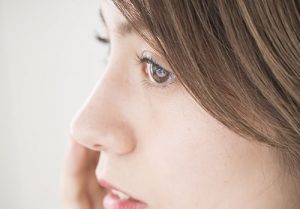
Image by Oka
Our skin is a powerful indicator of our health. Interestingly, signs of insulin resistance may be observed through our skin. Early detection of insulin resistance is extremely important as it may be a key factor in avoiding type 2 diabetes down the line. Once the diagnosis is established, you can begin creating a game plan to help reverse the trend.
What is Insulin Resistance?
Insulin resistance occurs when your cells start to become unresponsive to the hormone insulin. The pancreas secretes insulin whenever it detects a rise in blood sugar. This generally happens after a meal as glucose derived from the food enters the bloodstream. Insulin works to help cells pick up glucose to use for energy. When those cells begin to ignore the presence of insulin, the pancreas begins to produce more insulin in order to compensate. As resistance increases, so does the amount of insulin. Eventually, the pancreas may become damaged and stop producing the necessary amount of insulin. This can then lead to the development of type 2 diabetes. Insulin sensitivity usually begins years or at minimum, months before type 2 diabetes.
What Your Skin is Telling You
While some indicators of insulin resistance require testing, there are several conditions affecting the skin that may also alert you to the condition. As many as 91% of people diagnosed with type 2 diabetes are also experiencing at least one skin condition associated with insulin resistance. Knowing what to look for can help you and your doctor better assess your overall health. A few skin conditions to look for are:
- Skin tags: These are small soft benign tumors that typically appear around the neck, armpit, and groin areas.
- Acanthosis Nigricans or AN: There are several types of AN but the most widespread type occurs as a result of insulin resistance. This type manifests as darker velvety skin patches or thickened plaques. It typically shows up on the back of the neck, around the armpits, on the knuckles, or on the elbows.
- Hyperandrogenism in women: This condition can bring about problems like acne, hirsutism (male pattern hair growth), and AGA (androgenetic alopecia) or patterned hair loss. These conditions, while they can be an indicator of insulin resistance, are also a strong indicator for PCOS in women. It is not uncommon for women diagnosed with PCOS to also be insulin resistant.
Plan of Action
If you notice any of the above conditions, it is a good idea to talk to your doctor and discuss the possibility of insulin resistance as the underlying culprit. Many times, changes in lifestyle habits, such as nutrition and exercise, will be able to help you reverse the condition. Your doctor will be able to help you create a plan of action going forward.
Got Medicare Questions?
We hope that this information on skin signs of insulin resistance is useful to you.
Let us help you answer your questions so that you can get back to the activities that you enjoy the most.
Call (888) 446-9157, click here to get an INSTANT QUOTE, or leave a comment below!
See our other websites:

